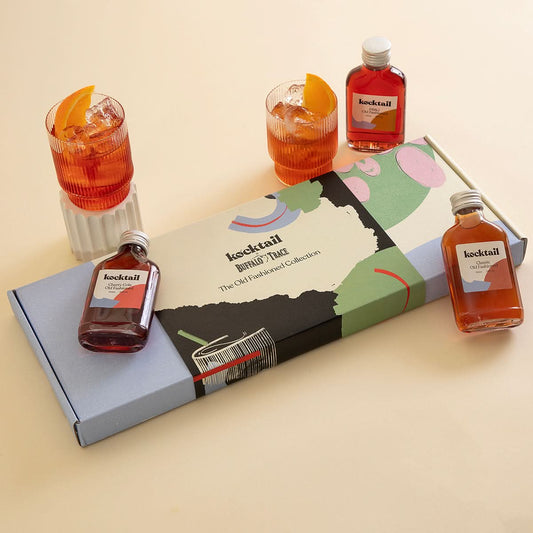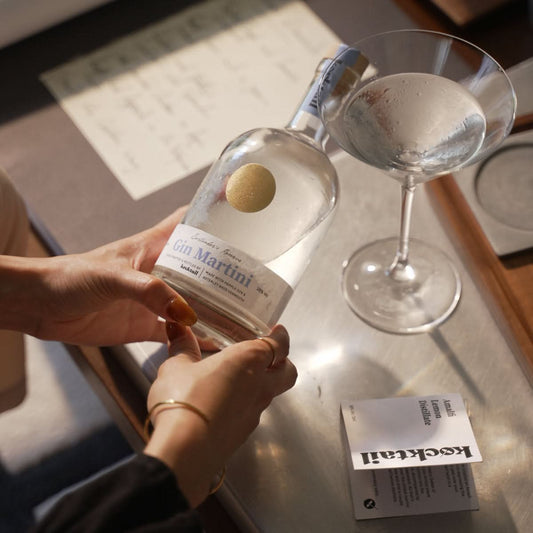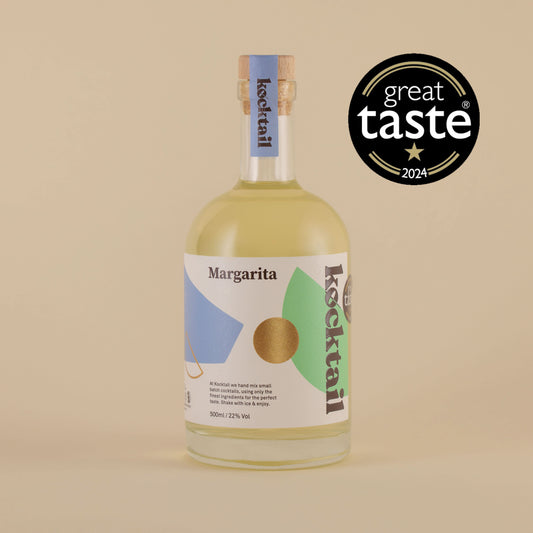1. The Word “Cocktail” Has Some Peculiar Roots
As always with the history of cocktails, we’re presented with a slew of stories pertaining to the etymology of the world cocktail…
The first is a particularly strange tale involving equine terminology. The story goes that when a buyer was coming to see a horse for sale, the seller would deposit a piece of ginger underneath the horses tail which would quite understandably lead the beast to perk up and become a “cock-tailed” horse. The term was then used to explain the perky alcoholic beverages we now know as cocktails.
The next contender is a little more straight forward - if a quite a bit more grotesque. Some scholars suggest the name is a corruption of Cock Ale “which is ale mixed with the jelly or minced meat of a boiled cock, besides other ingredients" - Thankfully, the days of Cock Ale are long gone!
The final origin story comes from Apothecary Peychaud in New Orleans who served a brandy drink in an egg cup. The drink took on the french name for an egg cup, ‘coquetier’. This was quickly shortened to ‘cocktay’ and then finally cocktail.
2. There Is An Official List of Cocktails
The International’s Bartenders Association has been around since it’s formation in 1951 at the Grand Hotel in Torquay. The IBA have an official cocktail list. It’s sort of the cocktail equivalent of “If you’re not on the list, you’re not coming in”.
3. The IBA’s list is split into three categories:
Unforgettable Cocktails - These are long time favourites, classics and drinks that have stood the test of time. These include the Sidecar, Manhattan and Daiquiri. They’re true heavyweights of the cocktail world.
Contemporary Classic Cocktails - As you might have guessed, these drinks were created ever so slightly more recently. You’ll find the Singapore Sling, French 75 and Mint Julep in this category. They’re not exactly spring chickens but they’re all stunning drinks in their own right.
New Era Cocktails - These are the new kids on the block (it really is quite an old block). You’ll find Dick Bradsell’s Espresso Martini, the Tommy’s Maragrita and the Yellow Bird on this list. They’re the bright young things of the scene.
4. Speakeasies Helped Make Cocktails More Popular
During Prohibition in America, bar and restaurant owners had to either stop serving alcohol or find a way to be more discreet in their business. The Italian restaurant, John’s of 12th Street in New York used to offer their patrons “dessert upstairs” - when the diners headed upstairs they would be served alcohol in tea cups along with their dessert.
The restaurant famously lit a candelabra when Prohibition ended and they have lit their candles every day since then. Fortunately John’s was never busted despite being regularly raided!
Cocktails had a real boost during the period as bartenders had to find a way to disguise to alcoholic base of their drinks. With Gin and Vodka being much quicker and easier to produce than other spirits, the bartenders of the prohibition era tended to use them more in their new creations.
5. Ice Is One Of The Most Important Ingredients In Your Cocktail
It’s a common misconception that too much ice can water a drink down, when the truth is that the correct amount of ice will actually stop your drink from being diluted. It’s science, trust us.
We hear you ask “What is the correct amount of ice?” and the answer is almost always - MORE ICE! Our Kocktail Curator recommends filling your shaker with ice above the level of the liquid and the same for in your glass, when ice is required.
This way you’ll always get a beautifully chilled drink with the perfect amount of dilution. It’s a win win situation.
6. Martinis Should Always Be Stirred, Not Shaken
Despite what James Bond may have famously insisted upon, Martinis should always be stirred and not shaken. In fact, there’s a fairly well established rule that says that you should only shake cocktails that contain fruit juice (or occasionally coffee or cream). Drinks without juice, otherwise known as Aromatic cocktails, should be stirred to avoid over dilution and to create a more silky texture.
So next time you’re in a casino in Monte Carlo, your local bar, or enjoying a spirit led cocktail from one of our Kocktail boxes at home - don’t listen to Bond, listen to us!




